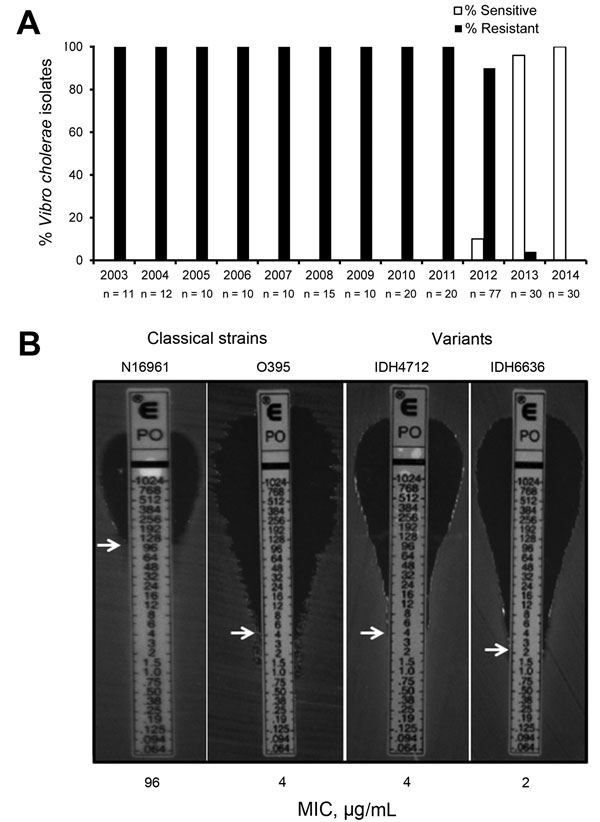Volume 21, Number 11—November 2015
Letter
Sensitivity to Polymyxin B in El Tor Vibrio cholerae O1 Strain, Kolkata, India
Figure

Figure. Isolation profile of polymyxin B–sensitive Vibrio cholerae strains in Kolkata, India, 2003–2014. A) Yearly occurrence of polymyxin B sensitivity and resistance in V. cholerae O1 El Tor variant strains isolated from Kolkata patients. During the study period, 255 strains were tested; n values indicate the number of strains tested each year. Polymyxin B–sensitive strains first appeared in Kolkata in June 2012. The first isolate in January 2013 was resistant, but, thereafter, all strains isolated during 2013–2014 were sensitive to polymyxin B, a biotyping marker for classical strains. B) MIC of polymyxin B in El Tor variant strains (classical and El Tor). MICs are indicated by white arrows. Polymyxin B sensitivity, a characteristic of classical strains, was displayed by El Tor variant strains. Data represent 3 biologic repetitions.